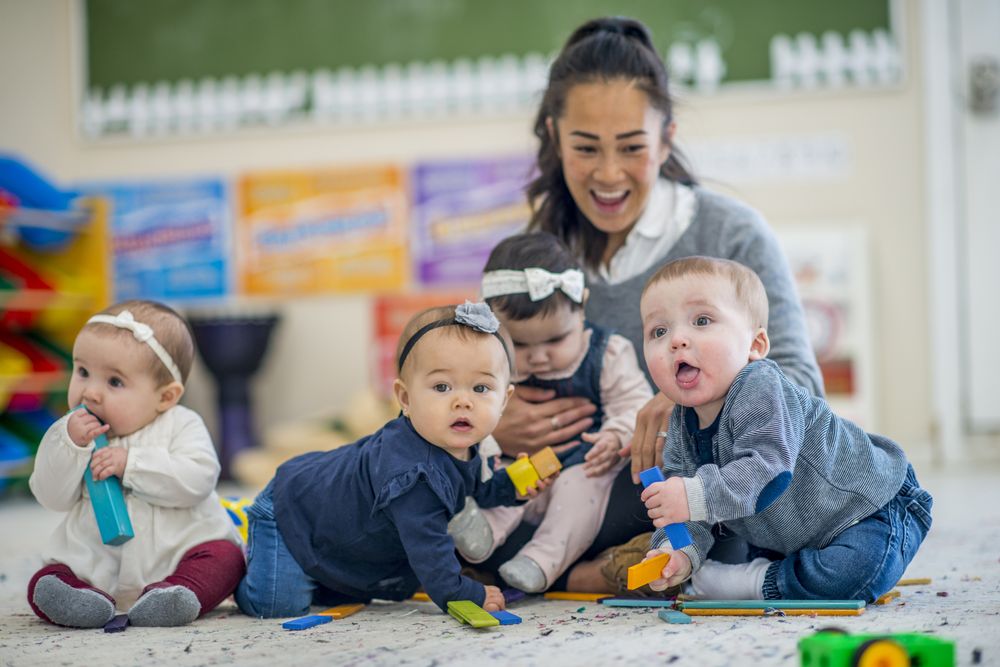Timaru's first bilingual centre going strong
Published on Tuesday, 10 September 2019
Last updated on Tuesday, 31 December 2019

Timaru's early childhood centre, He Manu Hou, only opened its doors a year ago but already it has a half-year long waiting list. The reason for this popularity? The facility is the first bilingual centre in the area giving preschool-aged children the opportunity to learn and communicate in both English and te reo Māori.
Celebrating its first birthday last month, He Manu Hou is a great example of just how appealing a bilingual practice is for families and how beneficial it is for children. Contrary to some schools of thought, bilingualism doesn't confuse children or lead to developmental delays, instead it enhances their skills and cultural identity.
Rising to need
According to Stuff, He Manu Hou (meaning 'a new fledgling, ready to fly') was established as a result of the Māori community identifying the need to keep te reo alive in South Canterbury. Located behind the Te Aitarakihi Multicultural Centre on Bridge Road, upon opening it quickly reached its capacity of 25 children per day and has now had to close enrolments until February due to such high demand.
The head teacher, Missy King, said that with the centre's teachers using te reo 'naturally', children picked up the language 'like sponges', just as they were already doing with English.
"When children are young, they pick up the sounds and don't have any hang-ups about getting it wrong," she said. "They sometimes won't reply to you but if you give them an instruction, they understand what is being asked of them."
Continuing the language path
While the children at He Manu Hou are benefiting from listening to and actively engaging with te reo, the managers also believe it's important to continue the exposure outside of their walls and are considering setting up adult classes for whānau.
"When you want it to be a living language, you want to be able to use it in lots of different contexts," said Missy King. "Our whānau have been able to contribute to every part of our strategic plan."
Apparently about 90 per cent of attendees at the He Manu Hou centre are Māori, with a few Pasifika and Pākehā children. The children are not divided into groups by age.
"For the older children, sometimes they have to deal with the younger children disrupting them. That teaches them lots of patience and understanding, but also provides that real sense of whānau."
The benefits of being exposed to multiple languages
What are the actual benefits of young children being exposed to more languages, in particular their native tongue? Here are some insights from Raising Children:
For the child
Speaking more than one language is linked to:
- Better academic results – multi or bilingual kids often concentrate better, have better analytical skills and are better at multitasking.
- Better sense of self-worth, identity and belonging – including positive feelings about cultural heritage and minority language, feeling confident about communicating and connecting with extended family members, and being able to enjoy art, music, movies and literature in more than one language.
- Diverse career opportunities later in life.
For the family
Developing a native language in children:
- Improves communication among family members.
- Makes it easier for children and their families to be part of their culture.
- Boosts family's sense of cultural identity and belonging.
For the community
When children speak more than two languages it means:
- Everyone in the community gets a better appreciation of different languages and cultures.
- Children can more easily travel and work in different countries and cultures in the future.
- Children understand and appreciate different cultures.
Ideas for incorporating multilingualism into your setting
There are a lot of ways you can encourage and easily incorporate multiple languages into your service. Here are a few ideas:
- Look at hiring more multicultural and diverse educators and staff members. Even team members such as chefs can make a big impact on the children's understanding and acceptance of other cultures.
- Encourage any educators with a native tongue to speak expressively to the children and other teachers in conjunction with English.
- Read stories with multiple languages at story-time and have multicultural books available for students to look at and read at their leisure.
- Display signs in Māori (and other languages) around the centre so children can be exposed to other written languages and the words become commonplace and understood.
- Encourage family members of students to visit and talk to the children about their culture and language.
Related Articles

Bilingual teachers in demand
Recent changes in government policy may result in increased demand for bilingual teachers - particularly those who can speak Te Reo Maori or Pasifika languages.

How to celebrate indigenous languages in your centre
Languages link us to individual identity, traditional culture and memory, learn how to celebrate diverse languages in your service.

Celebrating Matariki and Māori New Year
Educational activities and fun ideas for celebrating Matariki with the children in your service.
